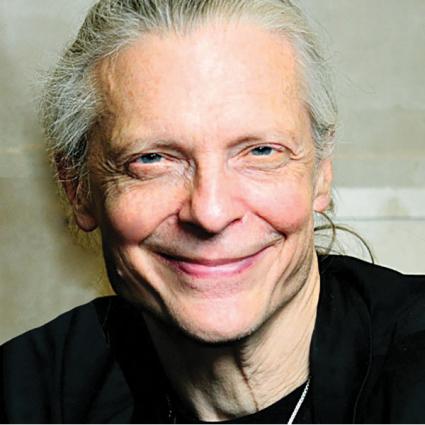Alex Grey, an icon of visionary art, has exhibited his work worldwide, from New York City to Paris to Tokyo, Brazil, and Moscow. Internationally renowned for paintings that deeply penetrate multidimensional reality, Grey interweaves biological anatomy with psychic-spiritual energies in his visual meditations on the nature of life and consciousness. He presents dozens of key-note addresses around the world, teaches visionary art nationally and internationally, and is the author of six books, including The Mission of Art, Sacred Mirrors, Transfigurations, and Art Psalms.
Alex Grey’s art and his life have been featured on the Discovery Channel and in the New York Times, Newsweek, and Time magazine. His artwork is celebrated by millions of music fans due to his live, on-stage painting appearances, music video animations, and his collaboration with major rock bands, as well as the use of his images in elaborate rock concert stage sets and his Grammy Award-winning album art for bands such as Tool, Beastie Boys, Nirvana, and SCI.
Committed to art that celebrates oneness, Alex and Allyson Grey, his wife and companion of 36 years, cofounded CoSM (Chapel of Sacred Mirrors), a church celebrating creativity as a spiritual path. CoSM, once a 12,000-square-foot spiritual-cultural center in the heart of New York City, now flourishes in the tranquil setting of a 40-acre interfaith spiritual retreat center, 65 miles north of New York City.
What People are Saying About Alex Grey
“Alex’s work, like all great transcendental art, is not merely symbolic or imaginary: it is a direct invitation to recognize and realize a deeper dimension of our very own being.”
—Ken Wilber, philosopher and director of the Integral Institute
“The Chapel of Sacred Mirrors will bring you face to face with your soul and move you to a new level of enlightenment.”
—Deepak Chopra, MD, chairman and founder of The Chopra Center for Wellbeing
“Mr. Grey’s paintings present man as an archetypal being struggling toward cosmic unity. Grey’s vision of a flawed but perfectible mankind stands as an antidote to the cynicism and spiritual malaise prevalent in much contemporary art.”
—New York Times
